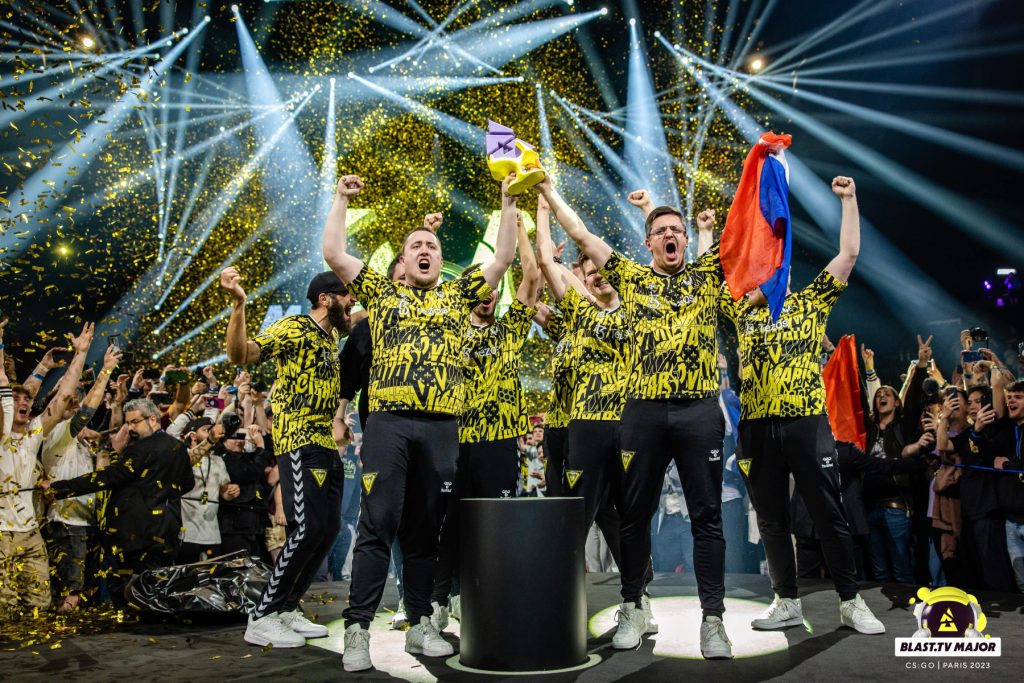
In September last year, tournament organiser BLAST launched BLAST.tv, its own viewing platform. Designed as a hub to offer a more engaging viewing experience for committed fans, the platform had its biggest test to date with CS:GO’s BLAST.tv Paris Major last weekend.
The tournament organiser has now disclosed that the BLAST.tv platform saw 27,000 peak viewers, and averaged about 5-10% of the viewership of Twitch — which itself claimed roughly 70% of the event’s viewership. These figures are currently not counted on viewership analytics platforms like Esports Charts.

The company also said BLAST.tv signed up 100,000 new registered users and drew 1.1m total visitors to the platform over the course of the Major. Users on BLAST.tv were found to interact more, chat more and watch two times longer than on other platforms, the company said.
BLAST said it was working on integrating its BLAST.tv viewership metrics into Esports Charts, which notably also excludes Chinese viewership data, and GOTV viewers (CS:GO’s in-game viewer).
The BLAST.tv platform was promoted heavily during the eponymously named BLAST.tv Major, with exclusive perks reserved for its viewers, amongst them 4K streaming and exclusive content.
In an interview with Esports Insider, Tom Greene, Chief Growth Officer at BLAST, said the company was happy with the platform’s growth — which by its own estimates was a 1000% jump over its previous peak viewership record.
“For us, it was a real success story. It really proved the thesis that there were hundreds of thousands of people that wanted to watch, in this case Counter-Strike, in a slightly different way,” Greene said.
The additional 27,000 viewers will do little to change the event’s overall viewership, or alter the Major’s position as the third-most-watched CS:GO Major.

Per Esports Charts’ metrics, the BLAST.tv Paris Major recorded 1.53m peak viewers, 508,000 average viewers and 59m hours watched on other platforms. It was also the first Counter-Strike event to be streamed on TikTok — though the social video platform only managed a measly peak of 2000 viewers.
But while the viewers watching through BLAST’s proprietary media player may be a splash in the ocean compared to overall viewers, the point of BLAST.tv is not necessarily to supersede more established platforms.
Greene explained that one of the value propositions of BLAST.tv is its ability to offer more tailored, engaging sponsorship opportunities and inventory for partners. Total control over the platform, and the media player, allows BLAST to deliver customisable activations to what are likely some of the event’s most hardcore, committed fans. In that context, 27,000 is suddenly quite valuable.
During the Paris Major, BLAST.tv viewers were treated to a fantasy competition sponsored by betting sponsor Unikrn, offered votes on what gamertag to feature on motorsport sponsor Alpine‘s Grand Prix car, and an integrated Pick’Em (prediction challenge) activation in partnership with CS:GO developer Valve.
“[These] are all good examples of how you can utilise direct access to the fanbase to create inventory or activations or authentic marketing pushes that maybe you can’t do elsewhere,” Greene said. “That is a cornerstone of our strategy, to give that access.”
Augmenting the viewership experience to better serve, engage and monetise (hardcore) fans through digital experiences and items is notably an approach recently espoused by League of Legends publisher Riot Games.
In a recent blog post, Riot’s President of Esports argued that this was the way forward for esports revenue generation, in turn announcing a virtual fan pass that aims to monetise online viewers in the absence of pay-per-view and non-negligible English-language media rights.
Greene echoed the sentiment. “What was interesting about that article was the way he was describing direct to consumer channels being the key to getting fans closer to their teams, and offering them ways to transact whilst they’re watching that they might not otherwise be able to. That’s a good example of the type of creative thinking and how one has to expand the horizons a little bit of what it means to monetise users in this area.”
BLAST.tv is the tournament organiser’s solution to that problem, arguably one of esports’ biggest challenges. The Paris Major was its first big test. As Counter-Strike esports enters a new era with the impending launch of CS2, how we watch may well be following suit.




